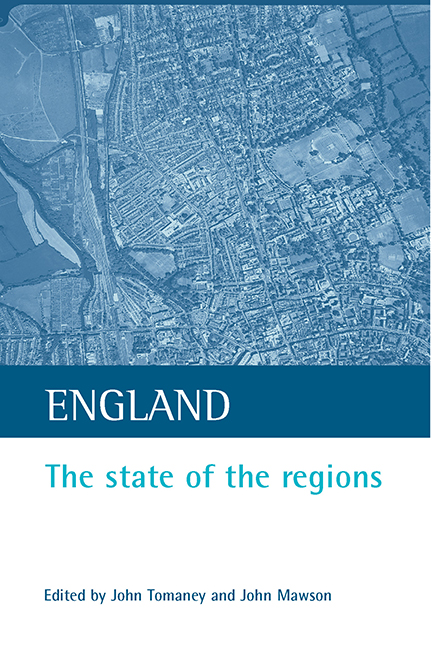Book contents
- Frontmatter
- Contents
- List of tables and figures
- Acknowledgements
- List of contributors
- one Introduction
- two Regional government in England: reviewing the evidence base
- three New Labour and the evolution of regionalism in England
- four Yorkshire (and the Humber)
- five Institutional collaboration in the West Midlands region
- six England's North West
- seven The South West
- eight Regionalism in the East of England
- nine The South East region?
- ten Regionalism in North East England
- eleven Regional strategy development in the East Midlands
- twelve The problem of regional governance
- thirteen Elected regional government: the issues
- fourteen Barnett plus needs: the regional spending challenge in Britain
- fifteen Conclusion: prospects for regionalism
- Index
- Also available from The Policy Press
four - Yorkshire (and the Humber)
Published online by Cambridge University Press: 20 January 2022
- Frontmatter
- Contents
- List of tables and figures
- Acknowledgements
- List of contributors
- one Introduction
- two Regional government in England: reviewing the evidence base
- three New Labour and the evolution of regionalism in England
- four Yorkshire (and the Humber)
- five Institutional collaboration in the West Midlands region
- six England's North West
- seven The South West
- eight Regionalism in the East of England
- nine The South East region?
- ten Regionalism in North East England
- eleven Regional strategy development in the East Midlands
- twelve The problem of regional governance
- thirteen Elected regional government: the issues
- fourteen Barnett plus needs: the regional spending challenge in Britain
- fifteen Conclusion: prospects for regionalism
- Index
- Also available from The Policy Press
Summary
The main social and economic challenges facing Yorkshire: the competitive disadvantage of the region
Yorkshire is England's largest county. With the administrative areas of North Lincolnshire and North East Lincolnshire, the hybrid region of Yorkshire and the Humber embraces a population of five million, a workforce of 2.3 million, or just under 9% of the UK total, with more than 1,500 foreign firms employing 130,000 workers in the region. In 1998, the region accounted for 7.5% of the UK's GDP but an average GDP per capita of only 88% of the UK average, South Yorkshire recorded a deteriorating GDP per capita of only 74% of the European Union (EU) average (GOYH, 2000, p 2). The main social and economic challenges confronting Yorkshire and the Humber have remained those that arose from the deindustrialisation of the 1980s and early 1990s. Yorkshire's remaining deep mines, including those of the Selby coalfield, have come under renewed threat during the Blair government's first term, while the steel industry and the region's defence manufacturers have faced major restructuring. To these have been added new challenges arising from the impact of flooding and Foot and Mouth on the region's agricultural and tourist industries.
As the most recent statistics for regional GDP (1999) have shown, Yorkshire and the Humber recorded a GDP of £57.5 billion, yielding a per capita income of £11,404 – only 88% of the UK figure, 86% of the English, and 91% of the Scottish (ONS, 2001, table 2). This meant that the region was the third poorest in England. When a 1999 Cabinet Office report sought to highlight the variations in economic and social conditions within the English regions, it drew attention to the fact that, while South Yorkshire (where 1.3 million of the region's 5 million population live) had qualified for £740 million of Objective 1 EU funding – because its GDP had fallen below the 75% of the EU average threshold – the other parts of the region had all performed “slightly better” than the rest of the UK in improving their percentage of the national average of GDP per capita between 1981 and 1996 (Cabinet Office, 1999, p 19).
- Type
- Chapter
- Information
- EnglandThe State of the Regions, pp. 45 - 62Publisher: Bristol University PressPrint publication year: 2002

